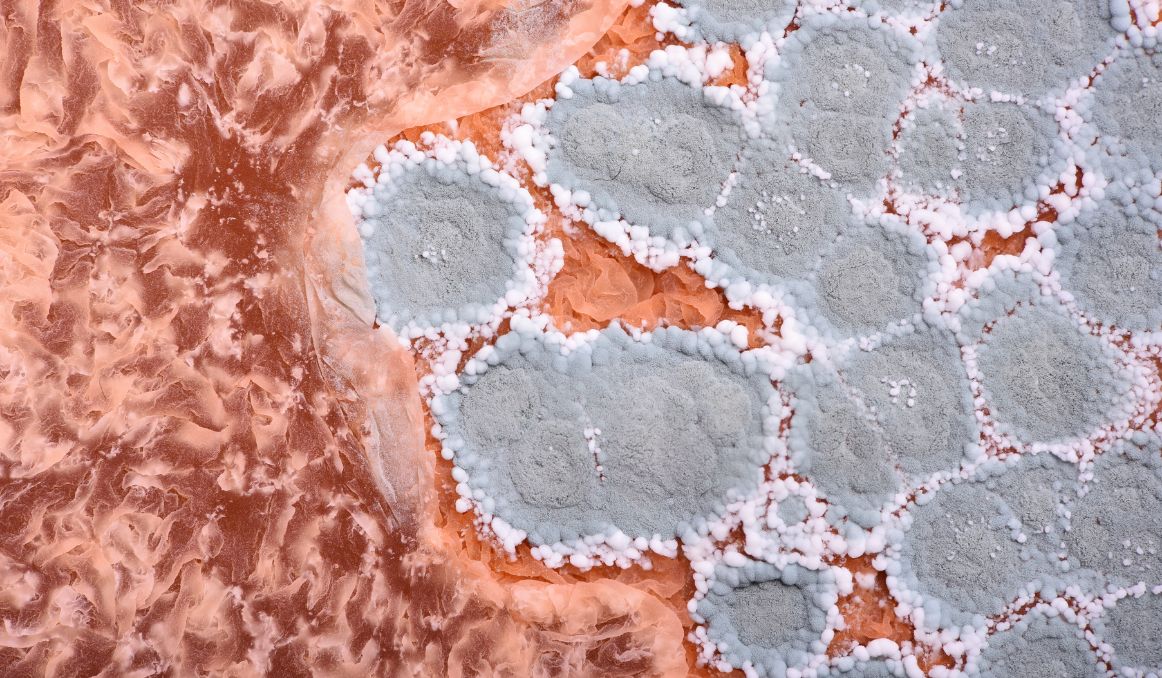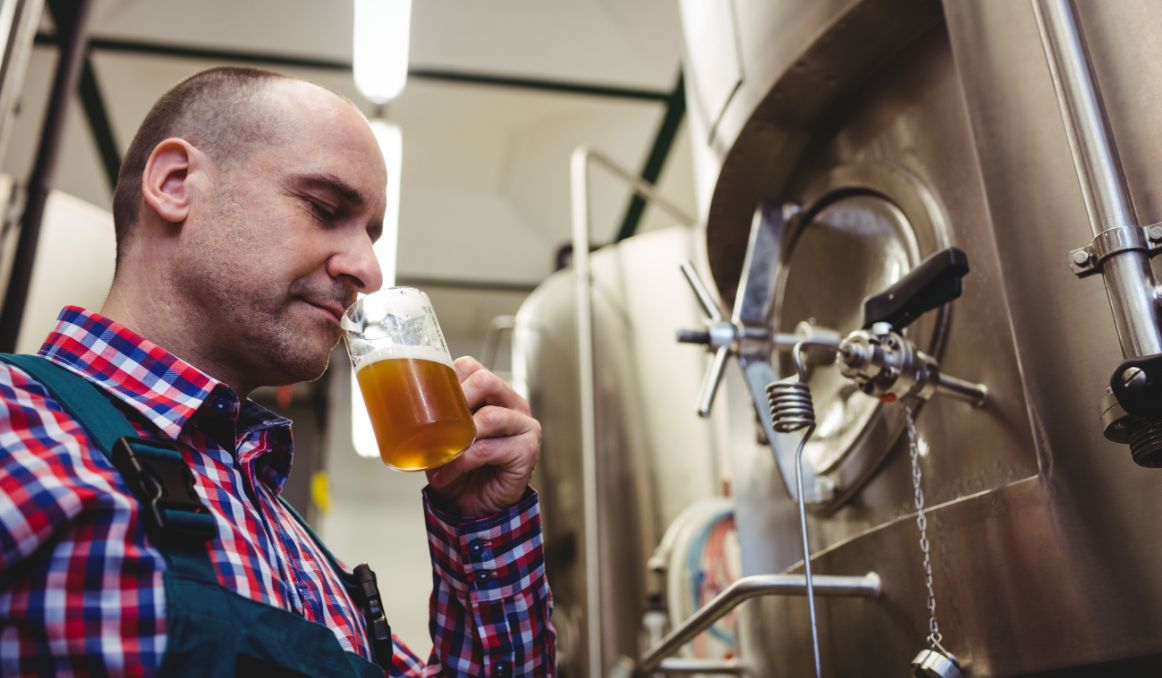Contaminated Beer: Signs, Prevention & Solutions
Everyone in brewing has had the concern come up at least once: what if I’m dealing with contaminated beer? When you’re new to brewing, it can be quite concerning to witness the various changes beer can undergo during the fermentation process. Especially if you are experimenting with various yeasts and bacteria, you will see a wide range of color, smell, and even textural progression over the weeks and months that you work with a batch. If you’re not prepared for it, it can be scary, particularly if you plan to serve (or sell) your beer to others. So, how do you know if you have contaminated beer, and what are the signs, preventions, and solutions?
First, contaminated beer really just means it tastes bad. For the most part, beer that can actually harm you is extremely rare. Plenty of research has been done on the many different types of wild yeast, bacteria, fungus, and even mold that can creep into beer, and with the exception of a rare mycelium, humans are safe from any kind of illness, and certainly death, when it comes to what might “contaminate” your beer.
The truth is that most contaminated beer has just been infiltrated by a wild yeast you were not planning on, a bacteria you did not account for, or, sometimes, a mold. None of these invaders will actually harm your beer, and much of it actually can add flavor and aroma to your batch.
You might end up with your first batch of unexpected sour beer!
Signs of Contaminated Beer
Still, you would like to know if your beer has been contaminated either way. Fortunately, there are some very obvious signs of contaminated beer.
Off Smell
One of the first things you might notice in contaminated beer is that it just does not smell quite right. It might smell a bit sour or moldy, maybe even like vomit. Wild yeast contamination in beer can throw a batch off quickly.
Beer Tastes Off
Follow that off smell up with a taste, and you’ll know right away that your beer does not taste as you expect it to. Fear not, in the vast majority of cases, tasting off beer will do you no harm. Indeed, that off flavor might be a good one, and you may decide to work with what you’ve got.
Mold on Top

Again, it might look gross, and it certainly tells you that your beer has been contaminated, but in most cases, you can simply skim the mold off the top of the beer and continue your fermentation process. Taste your brew first to see if the flavor is an acceptable one. You might be pleasantly surprised. As very little research has shown that mold in beer is dangerous to humans, you are likely safe, but proceed with caution, and at your own risk.
Slime
Slimy strands in your beer mean you have a Lacto infection. This one, while still not harmful, is likely to throw your beer way off. Taste it. If you hate it, toss it. Then again, you may have a Lactobacillus pellicle (that slimy, milky formation in or on top of your beer) that never actually turns sour. So do not automatically dump it. Trust your taste buds and your sense of smell.
How to Fix Contamination
The key to any infection or contamination is to catch it early and fix it, and yes, in most cases it can be fixed. The contamination can be worked with, and you can save your beer. Remember, the only time you really need to dump it is if it tastes bad. No one wants bad tasting beer.
Cold Crash
The first trick to stop contamination is to lower the temperature of your beer. You can start with something called cold crashing, which involves lowering the temperature of your beer to 32 degrees F, and gently rock the fermentor while cold to get all the sediment to drop to the bottom.
Skim
You can also skim or filter mold, yeast, or slimy strands out of your beer and proceed with fermentation.
Re-Pitch
If you have found your fermentation process stuck, once you’ve skimmed or filtered out unwanted sediment, yeast rafts, or mold, you can re-pitch with a new yeast to get your beer actively fermenting again.
This step will create more alcohol and destroy any unhealthy bacteria or mold residue.
Blend
Another option with stuck fermentation is to add in another batch of beer that has progressed well. The good beer will wake up the contaminated, stuck beer, and you may find you have a lovely new blend to share.
How to Avoid Contamination

Finally, how to avoid contamination altogether is a critical question here. While you may be able to make contaminated beer work, you likely want to be able to manage your beer to your expectations. Here are some tips to that end.
Clean, Sanitize, Airtight
Make sure all of your equipment is cleaned first, then sanitized, and that it has no cracks or creases to allow air into your wort. Most of the time, infection of beer comes from one of these factors.
Use Fresh Ingredients
That nasty mold we talked about above, the tiny 1% that can harm humans? It comes from mold on grain. So be sure all of the ingredients you put into your beer are fresh, including your yeast, which can be contaminated as well.
Active Fermentation
Check for yeast viability and vitality, which will ensure your beer fully ferments, creating all that bacteria-killing alcohol.
Dark Spaces
Store your beer in dark spaces, both while it is fermenting, and once you’ve bottled it. Light allows harmful bacteria to thrive, and we don’t want that.
Get the Equipment
And finally, invest in the equipment that will allow you to check your beer at every stage of the fermentation process. You can check that your gravity is dropping steadily, check the yeast’s vitality and viability, and you can check for unwanted, and potentially dangerous, invaders.
Cheers!
Are you still pitching fresh yeast every time? By reusing your yeast, you can save up to hundreds of thousands of dollars per year on just yeast alone!
Join the hundreds of brewers from all around the world using the smartest Automated Yeast Cell Counter! Request a Free Demo Account today and experience firsthand how Oculyze can take your brewery to the next level!
Sources:
- Richard J. Cole, Joe W. Dorner, Richard H. Cox, and Lawrence W. Raymond, Two classes of alkaloid mycotoxins produced by Penicillium crustosum Thom isolated from contaminated beer, J. Agric. Food Chem. 1983, 31, 3, 655–657
- Alexandre Paulino Loretti, Edson Moleta Colodel, David Driemeier, Andre Mendes Corrěa, Jorge José Bangel, Jr., Laerte Ferreiro, Neurological Disorder in Dairy Cattle Associated with Consumption of Beer Residues Contaminated with Aspergillus Clavatus, Journal of Veterinary Diagnostic Investigation, 2003
- Xenia Pascari, Jordi Ortiz-Solá, Sonia Marín, Antonio J.Ramos, Vicente Sanchis, Survey of mycotoxins in beer and exposure assessment through the consumption of commercially available beer in Lleida, Spain, LWT
Volume 92, June 2018, Pages 87-91 - https://www.beercraftr.com/contaminated-beer/
- https://www.mrbeer.com/blog/post/is-my-beer-infected
- https://www.beersyndicate.com/app/Tutorial/Details/51
Stay on top on important fermentation insights – subscribe to our monthly newsletter and receive a hand-picked selection of our most relevant articles straight to your inbox.
Never miss a beat and get real time updates with a new article each workday by subscribing our social media channels.
Instagram | Facebook | Twitter | YouTube


